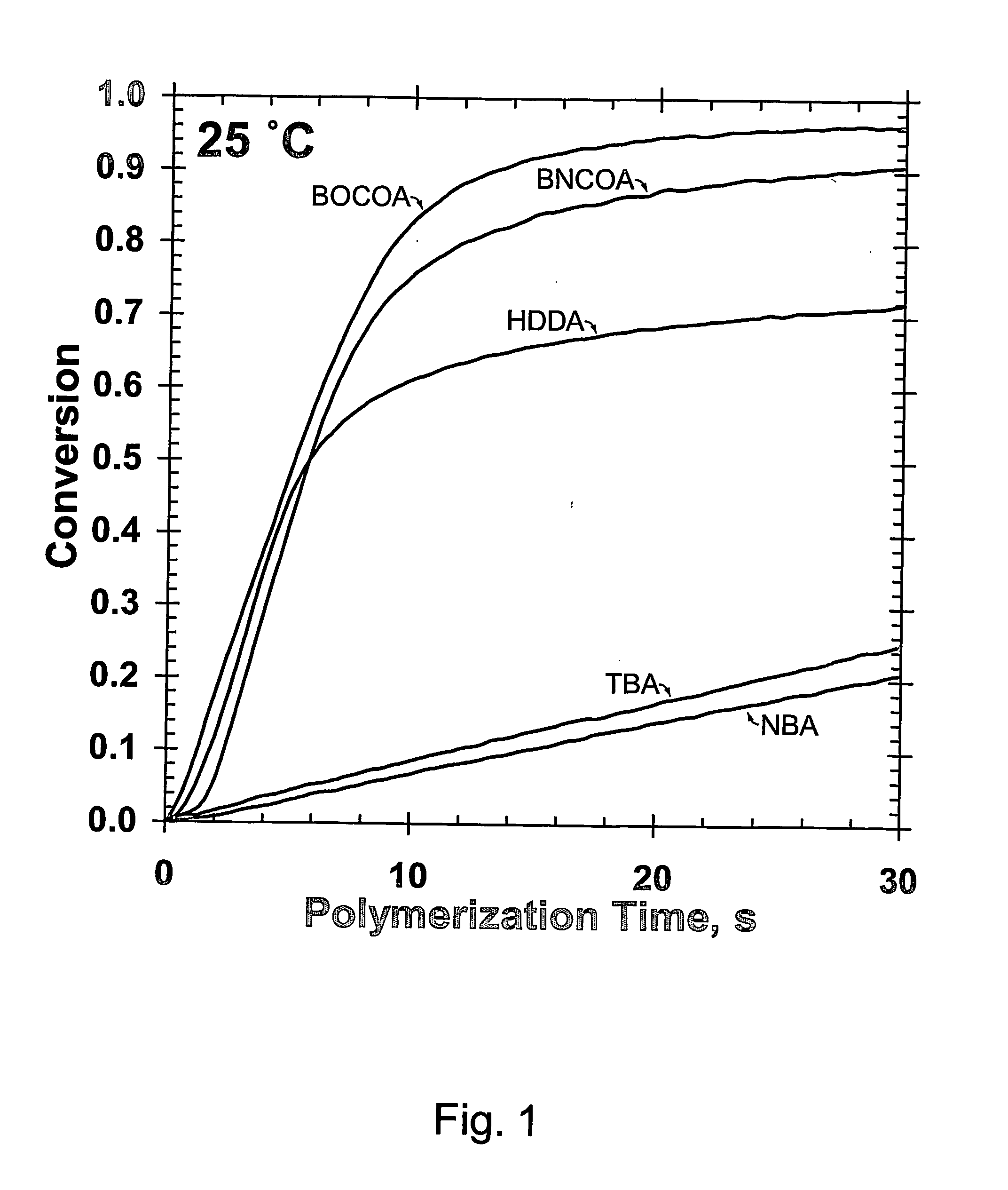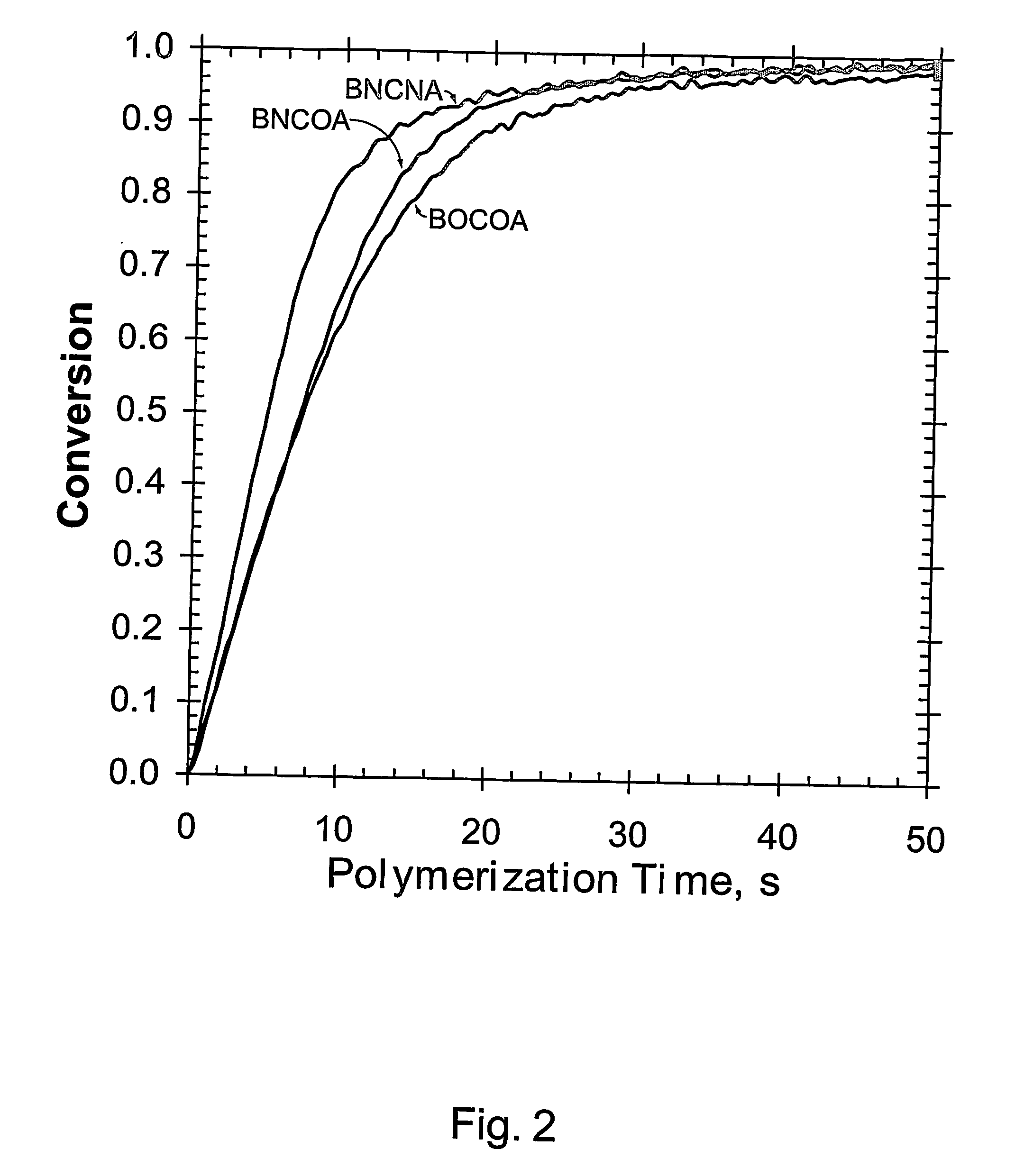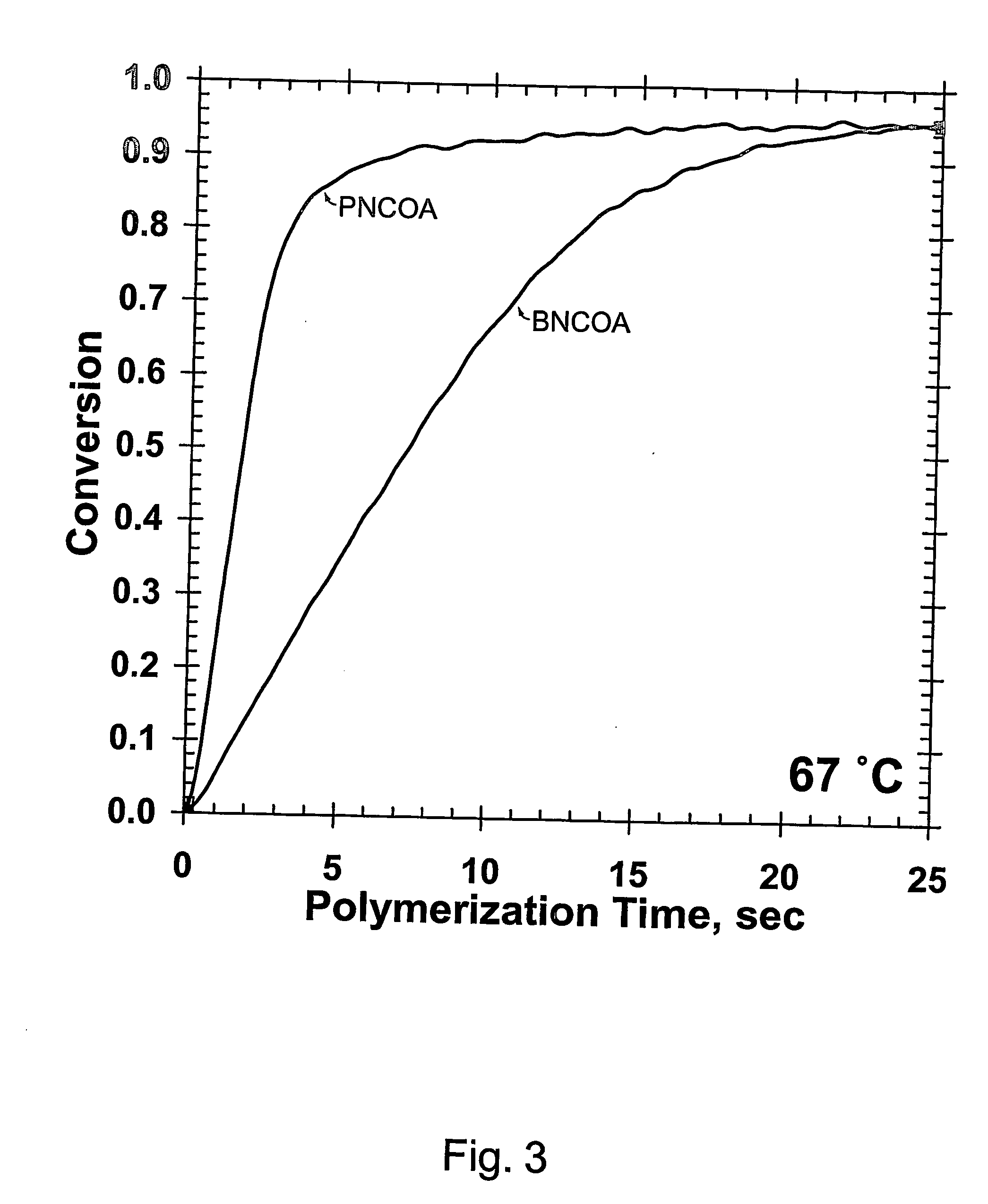(Meth)arcrylic and (meth)acrylamide monomers, polymerizable compositions, and polymers obtained
a technology of acrylamide monomer and arcrylic acid, which is applied in the preparation of carbamic acid derivatives, organic chemistry, chemistry apparatus and processes, etc., can solve the problems of limited durability, high residual/leachable monomer content of polymeric materials, and high toxicity of materials, etc., to increase the polymerization rate, and improve the polymerization rate
- Summary
- Abstract
- Description
- Claims
- Application Information
AI Technical Summary
Benefits of technology
Problems solved by technology
Method used
Image
Examples
example 1
Benzyl Carbonate(meth)acrylate
[0060] IUPAC name: (2-Methyl)-acrylic acid 2-benzyloxycarbonyloxy-ethyl ester
[0061] Common name: benzyl carbonate methacrylate
[0062] Abbreviation: benzyl OCO MA
[0063] IUPAC name: Acrylic acid 2-benzyloxycarbonyloxy-ethyl ester
[0064] Common name: benzyl carbonate acrylate
[0065] Abbreviation: benzyl OCO Acr
[0066] Five grams of 2-hydroxyethyl(meth)acrylate, 4 ml of triethylamine and 100 ml of methylene chloride were introduced into a three-necked flask in an ice water bath, equipped with a magnetic stirrer, reflux condenser and N2 gas purge. Five grams of benzyl chloroformate were added dropwise to the solution, while maintaining the temperature below 5° C. The reaction mixture was stirred at room temperature for 6 hours and then filtered. The liquid phase was washed with 1 wt % aqueous NaOH solution, 1 wt % aqueous HCl solution, and three times with saturated NaCl solution. The product was then dried over Na2SO4 overnight. After filtering and rem...
example 2
Benzyl Carbamate(OCN)methacrylate
[0070] IUPAC name: 2-Methyl-acrylic acid 2-benzyloxycarbonylamino-ethyl ester
[0071] Common name: benzyl carbamate(OCN)methacrylate
[0072] Abbreviation: benzyl OCN MA
[0073] Three grams of benzyl alcohol, 50 ml of dichloromethane, and two drops of triethylamine were introduced into a three-necked flask in an ice water bath, equipped with a magnetic stirrer, reflux condenser, and N2 gas purge. 2-Isocyanatoethyl methacrylate (4.5 grams) was added dropwise. The temperature of the reaction mixture was gradually raised to room temperature. The reaction was continued for three days, until the isocyanate was completely reacted, as evidenced by the disappearance of the isocyanate infrared absorption band at ca. 2270 cm−1. After reaction completion, the organic phase was washed with 1 wt % aqueous NaOH solution, 1 wt % aqueous HCl solution, and three times with a saturated NaCl solution, followed by drying over Na2SO4 overnight. After filtering and removing...
example 3
Benzyl Carbamate(OCN)acrylate
[0076] IUPAC name: Acrylic acid 2-benzyloxycarbonylamino-ethyl ester
[0077] Common name: benzyl carbamate(OCN)acrylate
[0078] Abbreviation: benzyl OCN Acr
[0079] Three different methods were used to synthesize benzyl OCN acrylate. The reason for using two methods was two-fold. The NMR of the pure compound revealed shoulders on two of the 1H NMR peaks at 3.4 ppm and 4.2 ppm, adjacent to the NCH2 and OCH2 protons. No other impurity peaks were present, but the shoulders remained unassigned. Thus, another synthetic method was designed which employed different reactants and reaction pathways. This method enabled verification of the source of the unassigned peaks. The second reason involved the availability and cost of starting materials. Method 3.1 is the least expensive in terms of raw materials, however, benzyl-N-(2-hydroxyethyl)carbamate was not readily available at the time of our initial efforts to synthesize this product. The second method (3.2) utili...
PUM
| Property | Measurement | Unit |
|---|---|---|
| thicknesses | aaaaa | aaaaa |
| temperature | aaaaa | aaaaa |
| temperature | aaaaa | aaaaa |
Abstract
Description
Claims
Application Information
 Login to View More
Login to View More - R&D
- Intellectual Property
- Life Sciences
- Materials
- Tech Scout
- Unparalleled Data Quality
- Higher Quality Content
- 60% Fewer Hallucinations
Browse by: Latest US Patents, China's latest patents, Technical Efficacy Thesaurus, Application Domain, Technology Topic, Popular Technical Reports.
© 2025 PatSnap. All rights reserved.Legal|Privacy policy|Modern Slavery Act Transparency Statement|Sitemap|About US| Contact US: help@patsnap.com



